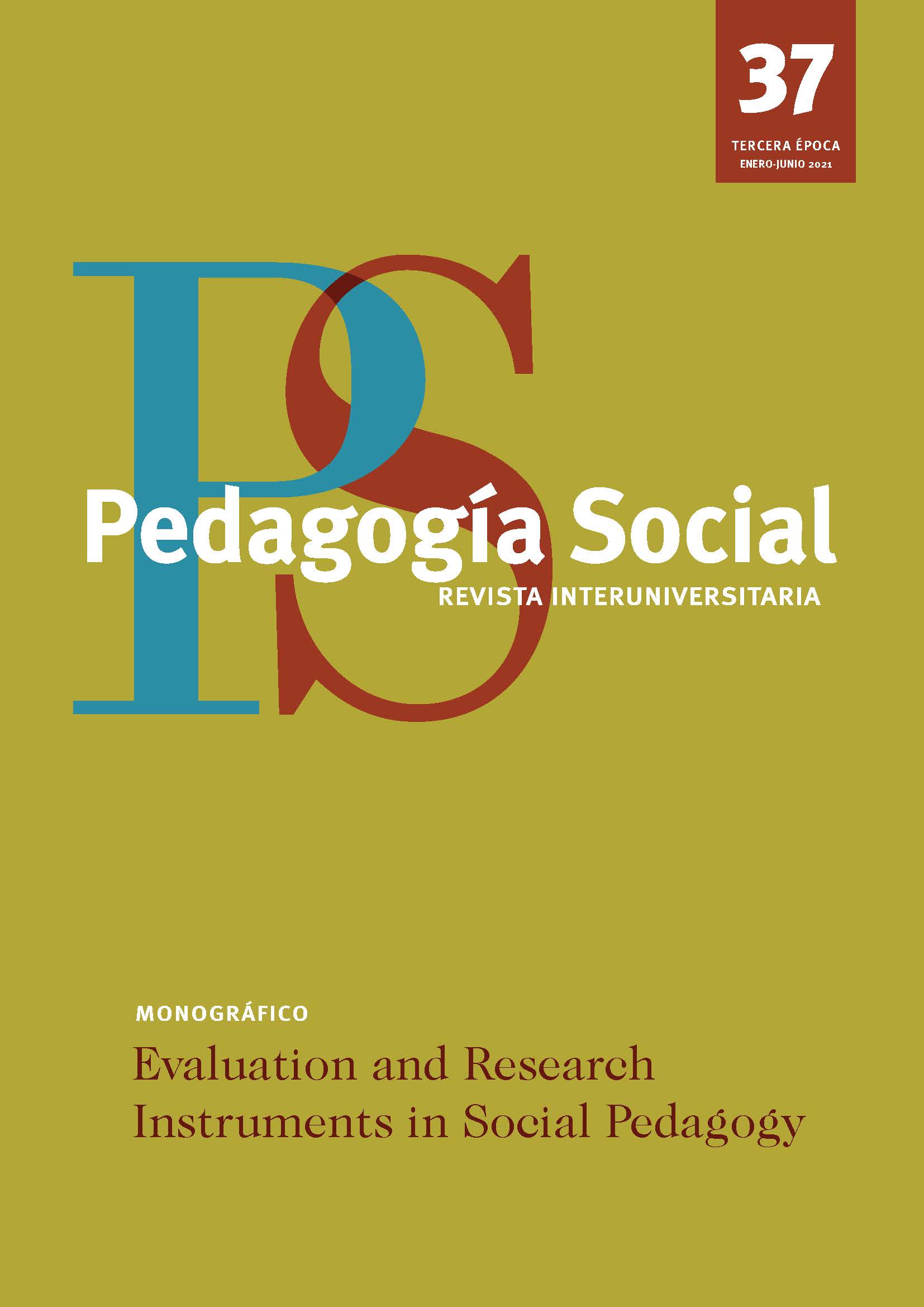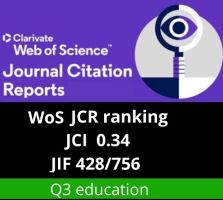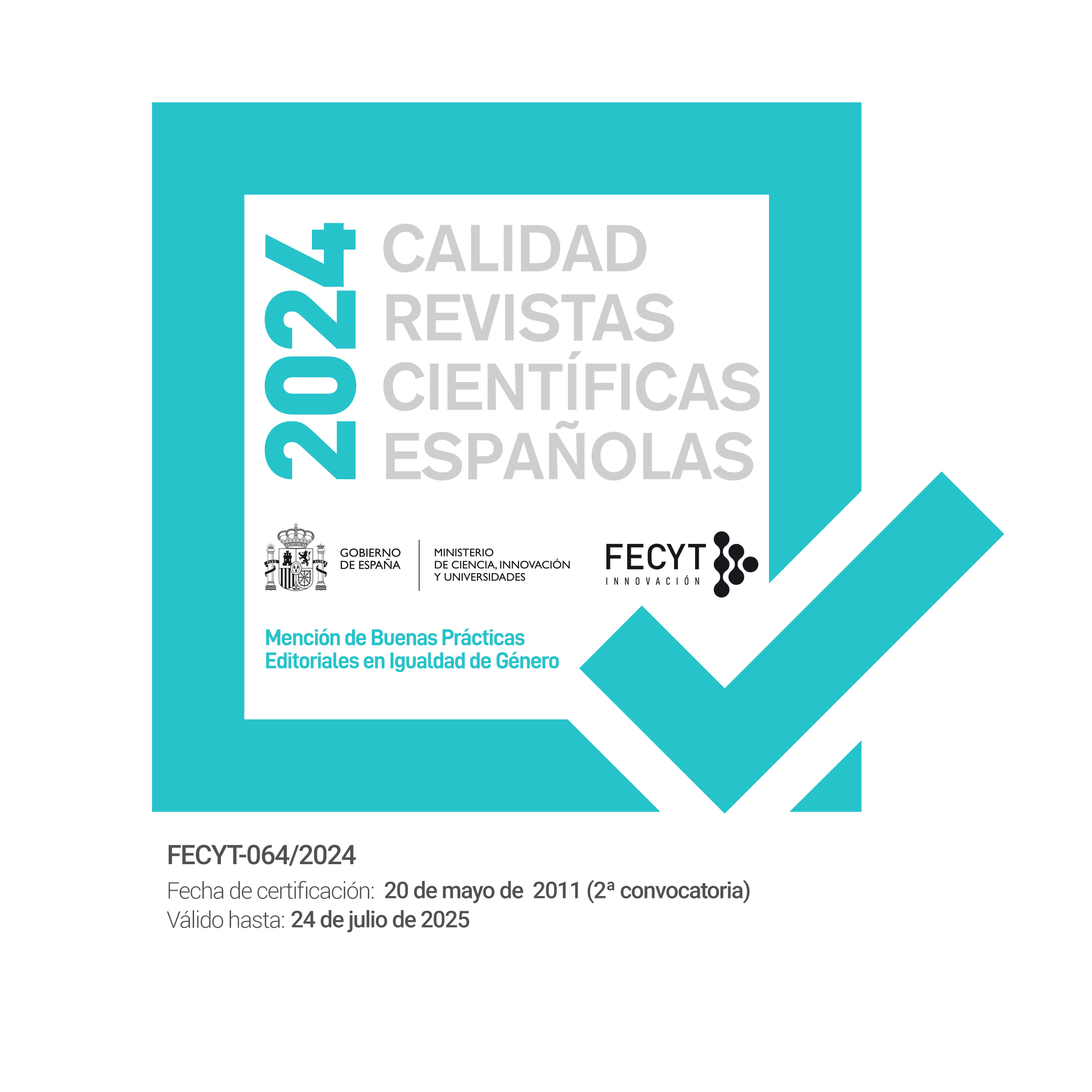Active aging scale
DOI:
https://doi.org/10.7179/PSRI_2021.37.06Keywords:
Active ageing; Assessment; Life quality; Social interventionAbstract
One of the key factors associated with the Second Demographic Transition is the increase of both old age and life expectancy in developed societies (Zaidi & Morgan, 2017)). Likewise, the former conception of old age used to be referred to dependent people, who were either alone or taking care of their grandchildren, whereas they are now perceived as active people, both personally and socially. Active ageing is the process by which health, social participation and security are optimized in order to improve quality of life in older people (WHO, 2002). The main objective in active ageing is increasing life expectancy, having better health and quality of life.
In this research the objective is to test the reliability of a scale to assess active ageing. 300 subjects have partaken, all of them taking part in special courses for older than 55 at the University of Las Palmas de Gran Canaria. 73,3% were women and 25% men, average age 70 years (ranged between 55-87 years). 49% are university graduates. 37,7% live alone and 37,3% live with their partner. This scale consists of 23 items, consisting of 5 Likert-type alternatives, made ad-hoc and personally administered. Exploratory and Confirmatory Factor Analysis show 4 factors with a good link index (CMIN=1.47; RMESA =.04; CFI=.976; TLI =.964). These factors are: Affective support and personal and emotional well-being; Health care and autonomy; Economic safety and Prosocial attitude. Total reliabilty of the scale is .91, and each factor oscilates between .82 and .64. To summarize, this scale will help determine which factors condition active ageing and can help create an intervention plan that will be able to improve well-being and life quality in old people, as well as to promote their social integration.
In this research the objective is to test the reliability of a scale to assess active ageing. 300 subjects have partaken, all of them taking part in special courses for older than 55 at the University of Las Palmas de Gran Canaria. 73,3% were women and 25% men, average age 70 years (ranged between 55-87 years). 49% are university graduates. 37,7% live alone and 37,3% live with their partner. This scale consists of 23 items, consisting of 5 Likert-type alternatives, made ad-hoc and personally administered. Exploratory and Confirmatory Factor Analysis show 4 factors with a good link index (CMIN=1.47; RMESA =.04; CFI=.976; TLI =.964). These factors are: Affective support and personal and emotional well-being; Health care and autonomy; Economic safety and Prosocial attitude. Total reliabilty of the scale is .91, and each factor oscilates between .82 and .64. To summarize, this scale will help determine which factors condition active ageing and can help create an intervention plan that will be able to improve well-being and life quality in old people.
Downloads
Downloads
Published
How to Cite
Issue
Section
License
Copyright (c) 2021 Pedagogía Social. Revista Interuniversitaria

This work is licensed under a Creative Commons Attribution-NonCommercial-ShareAlike 4.0 International License.
Copyright and right to archive
The published version of the articles can be self-archived by their authors in open access institutional and thematic repositories. However, Pedagogía Social. Revista Interuniversitaria must authorize partial or global reutilisation on new papers or publications.
Published papers must be cited including the title of the journal Pedagogía Social. Revista Interuniversitaria, issue, pages and year of publication
Ethical responsibilities
Pedagogía Social. Revista Interuniversitaria does not accept any material that has been previously published in other documents or publications. Authors are responsible for obtaining the required permissions for partial or global reproduction any material from other publications, and to correctly quote its origin.
Pedagogía Social. Revista Interuniversitaria is obliged to detect and report fraudulent practices.
Only those who have intellectually contribute to the development of the paper must appear as authors.
The journal expects authors to declare any commercial partnership that might entail a conflict of interest with respect to the submitted article.
Authors must mention in the article, preferably in the “methodology” section, that the procedures used during the samplings and controls have been made after getting informed consent.
The journal will not use any received contribution in a way other than the goals described in these guidelines.
Copyright Notice
© Pedagogía Social. Revista Interuniversitaria. Papers published in both the printed and online versions of this Journal are property of Pedagogia Social. Revista Interuniversitaria, being required to cite the source in any partial or total reproduction.
Unless otherwise stated, all content of this electronic journal is distributed under "Creative Commons Attribution-Non commercial 3.0 Spain" (CC-by-nc) license for use and distribution. The informative version and the legal text of this license is available here. This has to be expressly stated in this way when necessary.






